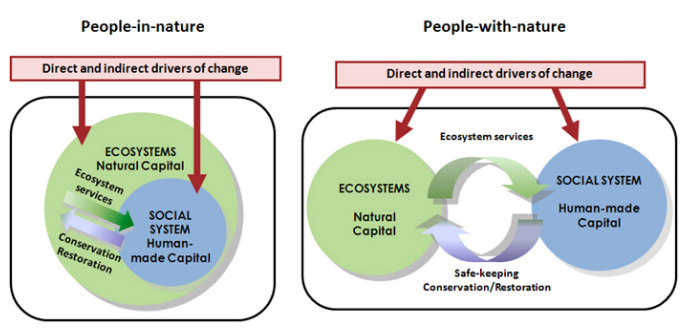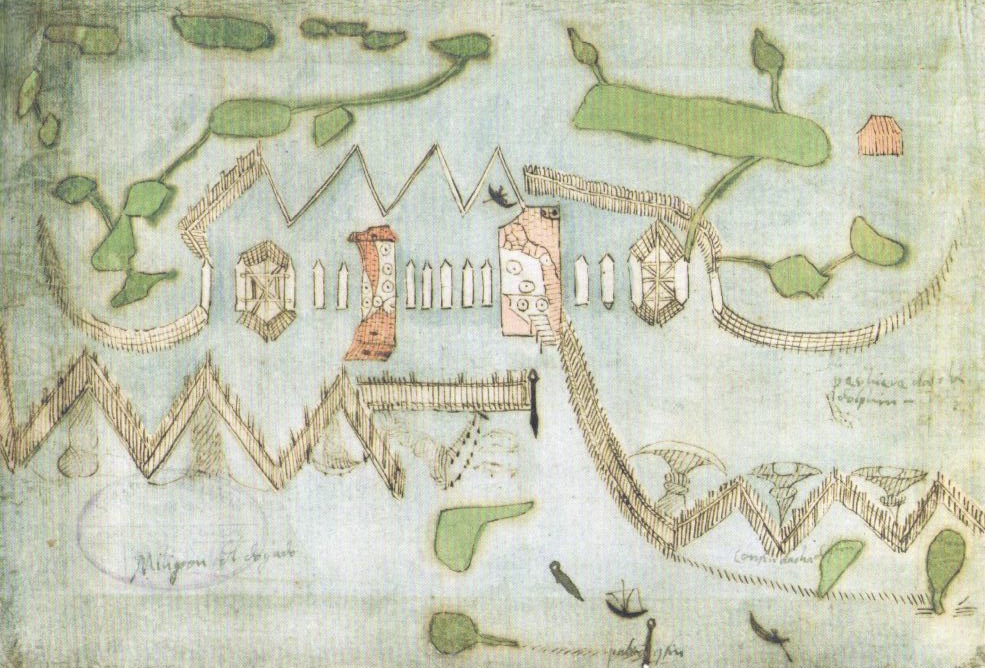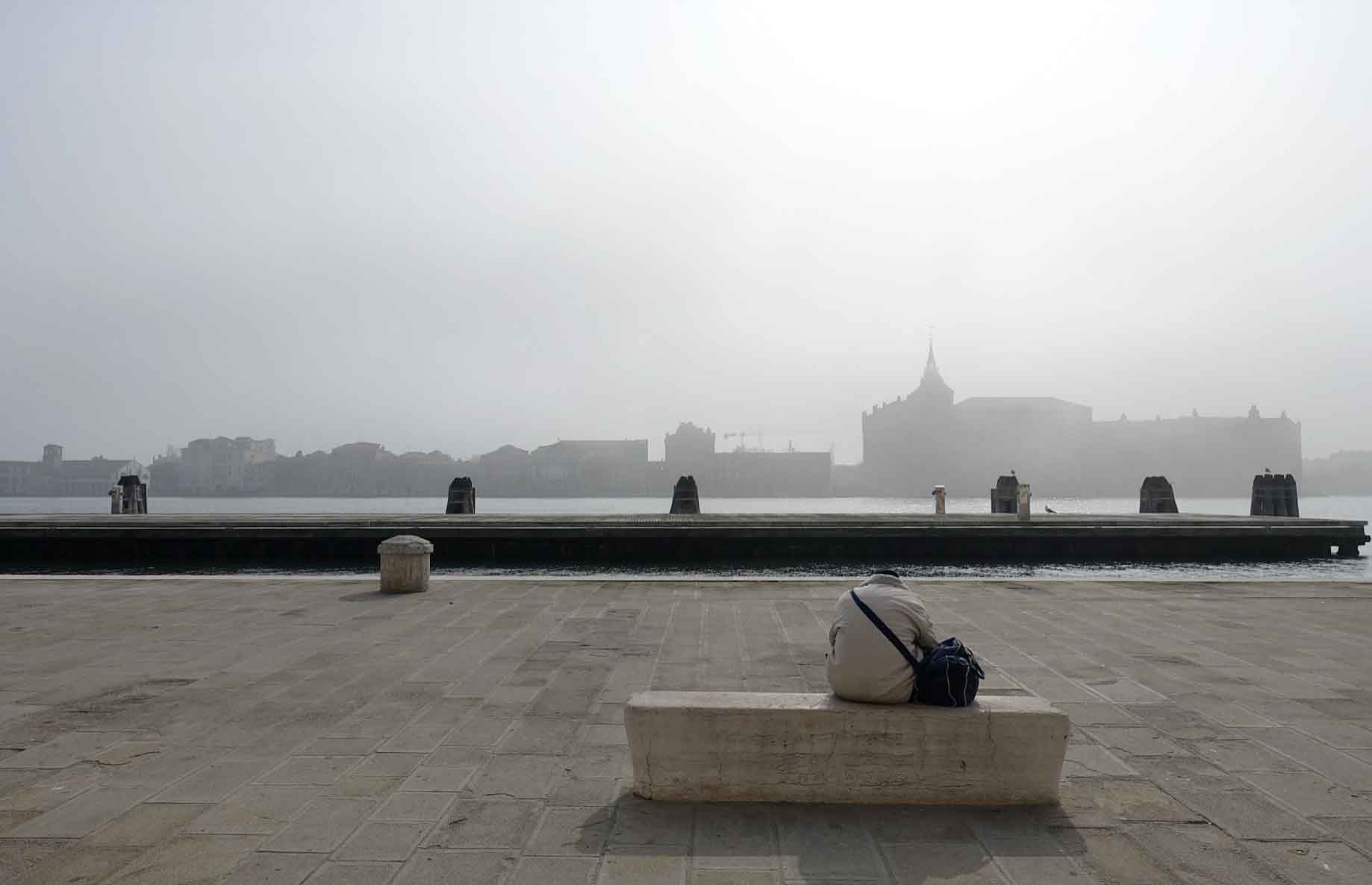Biocultural Diversity as a lens for future visions
Biocultural Diversity as a lens for future visions

Today, links between human communities and the natural environment remain strong only among people who have maintained close material and spiritual ties with their environments, such as Indigenous Peoples and some distinctive local communities, including inhabitants of the Venice Lagoon. Through mutual adaptation, human communities have developed thousands of different cultures and languages that have inevitably been shaped by the interactions with the natural world. Meanwhile, the continuing loss of biodiversity around the world remains problematic for nature conservation (and human survival), and the ongoing decline in the global diversity of both nature and culture raises questions on the relationship between human culture, heritage and history, and nature expressed as ecology or biodiversity.
In Venice, local traditions, culture and ecological knowledge are closely integrated with the emerging scientific and environmental priorities linked to the protection and regeneration of the historic city, surrounding area and the lagoon and different approaches to assessing their conservation status.
Biocultural diversity is an interesting concept for considering how people in industrialised and globalised societies deal with nature
“Biocultural diversity” is a lens through which to look at the vital interrelations of all life on planet Earth. The concept describes the network of relationships linking the human race to itself and to the rest of the biosphere, considering all linear and non-linear dynamics. It was formalised by the UN Convention on Biological Diversity that identified the need to maintain not only biodiversity at the genetic, species and landscape scale, but also the biodiversity-related knowledge, innovations and practices of indigenous people and local communities.
Biocultural diversity is also an interesting concept for considering how people in industrialised and globalised societies deal with nature. Wherever we are, the surrounding environment has sustained or sustains people; in turn, people have sustained (or damaged) the local environment depending on the traditional wisdom, activities and behaviours embedded in their cultures and languages.
BIOCULTURE
We are now in an epoch when links between people and nature are finally (again) becoming more explicit in territorial management, policy, and governance. Thanks to the convergence of social sciences and natural sciences, the dichotomy between “nature” and “culture” has finally been revised in a way the intrinsic value of the environment is increasingly acknowledged in current ethical thinking and practice. Placing an intrinsic value on nature offers valuable additional perspectives for analysing the relationships between the natural environment, its many human uses and users. It allows for the recognition of large complex Socio-Ecological Systems (SES) that represent humans and the rest of nature as interdependent integral, complementary components of a unitary system, characterised by multiple feedback loops, unpredictability and cross-scale dynamics.
In other words, a more relationship-based approach to environmental issues is growing, shaping concepts such as natural capital, ecosystem services, nature's contributions to people and improving awareness of the interconnections and co-benefits.

In many landscapes, human cultures and their associated behaviours shape biodiversity through the direct selection of plants and animals, reworking the whole land and waterscapes, with mutual feedback going both ways. The city of Venice is an emblematic example of how human settlements evolved in response to environmental change: think about the infrastructural interventions in the 1990s to early 2000s to raise the pavement level in the historic city to reduce exposure to flooding.
Activities and policy choices of the city have also shaped thes lagoon waterscape, notably channel dredging and reclamation of marshy areas for urban expansion. Most of the environmental management in the past was rather active, based on a collective and political intentionality directed at fusing natural forces with human agency. Since the last century, however, territorial management has focused more on the lagoon as infrastructure rather than host to life-supporting biodiversity.
Until then, Venice characterised a specific form of Water Civilization reflecting the many local communities that developed over centuries, dependent on aquatic resources and this has led to the development of a particular culture, distinct from the farming communities of the Venetian hinterland. Progressively, Venetian-lagoon life, at the interface between water and land, acquired uniqueness.

In the course of time, the image of water as a symbol of Venice became associated not only with the Mediterranean Sea, where the Venetian Republic proclaimed its power, but also with the lagoon itself. In fact, the lagoon was not simply a refuge for the inhabitants as they engaged in trade; indeed, it was from the lagoon water that the Venetians derived much of their wealth. Beginning with salt production and trade, then fishing through the fences of the valleys (traditional valli da pesca) and waterfowl, through hunting and finally, to a lesser extent, agriculture and vineyards.
DIVERSITY
Converging of extinction crises: the loss of biodiversity is accompanied by a massive loss of human languages and traditional cultures
The diversity of a system is frequently used as a proxy for longer term health, since a diverse system has greater adaptive capacity and is therefore more likely to withstand disturbances and adapt to change. It is now understood that many causes of biodiversity loss are also mirrored by the loss of cultural diversity (e.g., monoculture of the land, people and mind). Common drivers of diversity erosion include a shift in consumption patterns and commodification of natural resources reinforced by urbanisation and standardisation of the human experience.
Scholars raised the attention on the “converging of extinction crises”: the loss of biodiversity – meant as the immense variety of world’s biological species, genes and ecosystems – is accompanied by a massive loss of human languages and traditional cultures.

Life in Venice now is characterised by environmentally disconnected activities and cultures. Think about the monoculture of mass tourism, its vicious impacts on both the environment of the lagoon in terms of atmospheric and water pollution and on the social fabric of the historical city and the lagoon islands in terms of gentrification, loss of services and resident depopulation. Diversity loss has the capacity to impact socio-ecological systems’ vulnerability, decreasing their capacity to absorb and cope with change without losing critical functioning. This was evidenced by the economic collapse during the Covid-19 pandemic. This is also what the lagoon is suffering as its characteristic morphologies, salt marshes, have been exposed to high rates of erosion in the last century, decreasing their capacity to support the ecological functioning of the whole lagoon system and at the same time increasing the vulnerability of Venice as a built city.
What’s more, global changes are on their way: Venice is drowning under the joint impact of subsidence and of sea level rise. International and local scholars still cannot agree on the expected impacts of sea level rise on tVenice, highlighting the complexities behind both the rational acceptance and the emotional reaction to these realities.
RESILIENCE
Overshadowed by its rich past, Venice struggles to negotiate its position in the modern world being overwhelmed by tourism, population decline and extensive ecological degradation in the lagoon. Venice and its lagoon can only survive in symbiosis within a single socio-ecological system, with the boundary between “natural” and “manmade” entirely blurred. Moreover, the effect of global environmental changes are felt more acutely in a city whose urban form is permeated by water and rhythms of life are dictated by the tides. Understanding how to better conserve and restore Venice’s biocultural diversity is linked to VITAL’s ambitions to advocate for Venice’s scope to display eternal resilience. Renewed attention to biocultural diversity has the potential of providing a long-term framework for reviving Venice’s resilience and regenerating the lagoon’s adaptability to change. To reframe the narratives “the Death of Venice” or “Venice is sinking”, the recognition of the inextricable links between Venice civilization and the lagoon nature will provide the ground for a revived and contemporary stewardship of Venice’s unique biocultural diversity.
Fishermen, with their practical expertise and innate understanding of natural dynamics, have always constituted a precious source of information regarding lagoon conditions and processes, supporting the relevant authorities, to a greater or lesser degree, directly and indirectly, in “managing the commons” over the centuries. Contemporary Venice needs to reinforce interconnections between the human and environmental dimensions and rediscover itself as an exemplary community that is succeeding in reviving traditional but also creative biocultural diversity. There are still many remiere, for example, where learning how to row the complicated canals of the city and channels of the lagoon combines with preserving the art of rowing along with the whole tradition of working with wood in order to produce typical boats and oars. The presence of these boats in the canals, in turn, also (potentially) conditions motorised water traffic.

Collectively investigating some of the reasons – in terms of social meanings and values – why the Venetian civilization is still uniquely “diverse” will allow us to re-assign the lagoon ecosystem as part of the community, rather than as a commodity. At the same time, identifying the radical pressures on the healthy ecological functioning of the saltmarshes, will allow us to engage residents, and generate the public and political will to resolve under-regulation and depopulation in a city which has become a by-word for the worst excesses of globalisation and mass-tourism. Safeguarding and restoring the diverse forms of natural capital generated by transitional waters could both generate wealth as well as revive and renew the Venetian civilization.
Considering the current state of wetlands in general, both the threats highlighted by studies on the degradation of such ecosystems and the opportunities highlighted by studies on the typology and scale of ecosystem services provided, stewardship of biocultural diversity in Venice and worldwide needs to be prioritised in order to enable the shared vision of “living in harmony with Nature” by 2050 as ratified by governments in the Post-2020 Global Biodiversity Framework.
◾